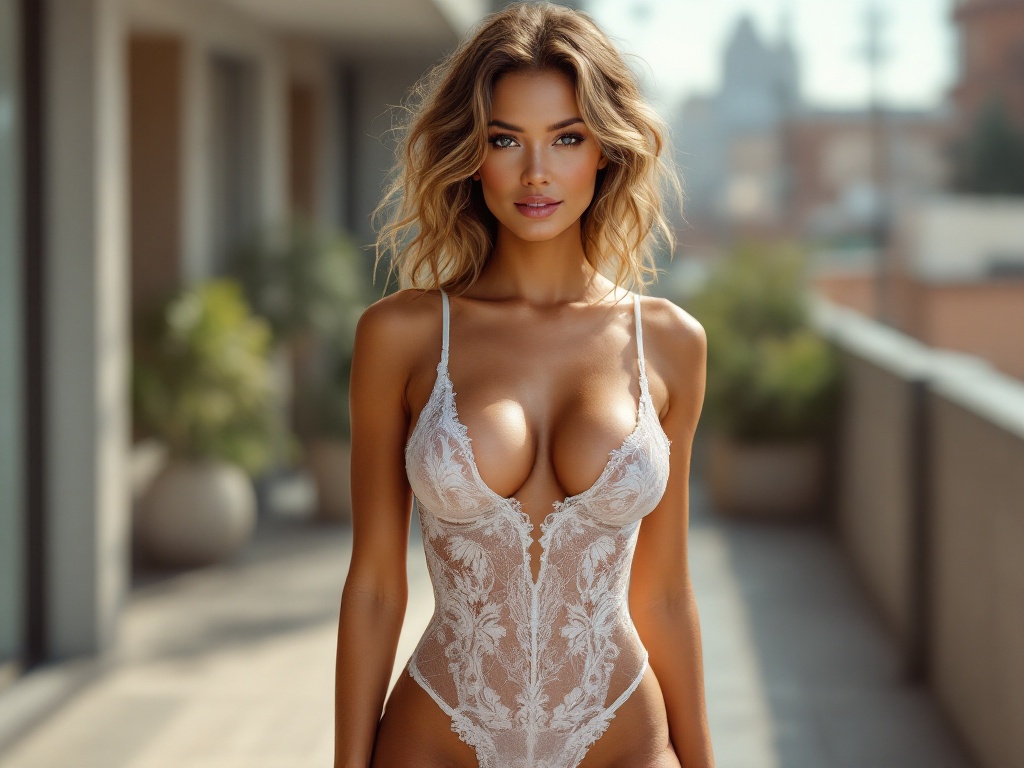In the contemporary landscape, the blend of technology and imagination has revolutionized various sectors, and fashion is certainly among them. With the emergence of artificial intelligence (AI), designers now have the unique opportunity to venture into previously uncharted realms of bespoke lingerie design. The breakthroughs facilitated by AI visualization are enabling fashion innovators to not only streamline their processes but also extend the limits of creativity itself. Employing clever algorithms and neural networks, AI is reshaping brand strategies in lingerie design and customer engagement like never before.
Amidst the growing competitiveness of the fashion domain, brands are eager to seize any advantage to distinguish themselves. AI visualization tools enhance the creative journey, simplifying the designer’s task of envisioning intricate details and variations in their work. These cutting-edge tools can craft precise 3D models and offer immediate feedback on designs, which can be truly empowering. These technologies herald an unprecedented era of personal expression through custom lingerie, equipping designers to effortlessly balance innovation with practicality.

Perks of AI Visualization in Bespoke Lingerie
AI visualization presents a myriad of benefits tailored uniquely for crafting custom lingerie. This leap forward in technology boosts creativity and efficiency beyond what traditional approaches could achieve.
Boosting Creativity and Design Adaptability
A major perk of AI integration is its power to elevate creativity. Designers can harness AI tools to experiment with an array of fabrics, cuts, and hues that might not be feasible without digital assistance. This software empowers creatives to instantly visualize design changes, offering an effortless platform for ideation and polish. This capacity to rapidly simulate various designs aids in making informed choices about style and fit.
- Quickly creates numerous design alternatives
- Enables real-time modifications
- Fosters bold, innovative design experiments
Streamlining the Design Journey
The conventional lingerie design process is typically burdened with obstacles, including long development times and substantial costs. However, AI visualization can substantially simplify several stages of this journey.

- Swift Prototyping: AI technologies can generate accurate 3D models, speeding up the prototyping phase. Digital models empower designers to make quick changes without requiring physical prototypes.
- Cost Projection: Integrating AI in the design workflow introduces the ability to accurately estimate material costs and production durations. This feature helps brands budget and allocate resources wisely.
| AI Advantages | Details |
|---|---|
| Speed | Quickens design and prototype creation processes. |
| Creativity | Boosts creative potential through rapid iterations. |
| Cost Efficiency | Assists in precise cost and material usage predictions. |
Personalization through Insight-Driven Data
Customization fueled by data is transforming how customers connect with lingerie brands. AI can scrutinize consumer preferences and body specifications, feeding this intuition into the design process. This means brands can deliver tailored fashion journeys that resonate deeply with their users. Picture a scenario where each customer is presented with lingerie choices specifically curated for their individual style and physical characteristics.
Moreover, AI’s proficiency in extracting insights from data allows brands to stay ahead of future trends. They can not only react more promptly but also forecast upcoming styles, making each product launch more strategic. Brands utilizing this technology can successfully capture niche markets often overlooked.

The Horizon of Lingerie and AI Advancements
As AI technology continues to advance, its applications in the lingerie sector are expected to grow immensely. Both emerging startups and established firms are exploring revolutionary methods to leverage AI. This modernization brings the prospect of solutions for:
- Sustainability: AI may introduce pioneering strategies to minimize waste in the design and manufacturing stages.
- Virtual Fitting Rooms: Superior AI will enable more precise virtual fitting experiences, revolutionizing online purchases, stimulating more confident consumer choices.
Furthermore, melding AR (Augmented Reality) with AI might allow customers to visualize how products would appear and feel on them in a virtual space, offering an exhilarating and immersive shopping adventure.
Conclusion
AI visualization is completely transforming the bespoke lingerie and fashion design realm. The advantages of amplified creativity, heightened efficiency, and personalized touches are initiating a surge of innovation across the industry. Brands and designers adopting these state-of-the-art technologies are primed to redefine consumer interactions and significantly expand their imaginative horizons. Looking forward, it’s evident that AI will be crucial in not only shaping the aesthetics of lingerie but also in fulfilling the growing demands for customization and sustainability.
FAQ
- What is AI visualization in fashion design?
AI visualization in fashion design implies utilizing artificial intelligence to craft lifelike visual depictions of garments and accessories, empowering designers to innovate and fine-tune their concepts. - How does AI enhance creativity in lingerie design?
AI boosts creativity by allowing designers to swiftly generate numerous design variants, explore novel patterns, and visually assess how various fabrics and colors interact. - Can AI assist with custom lingerie suggestions?
Absolutely, AI employs data analytics to provide personalized design propositions based on individual likes, body types, and current trends. - What are the prospective trends for AI in lingerie fashion?
Future directions could include more advanced virtual fitting spaces, eco-friendly production methods, and AI-powered insights into consumer habits and preferences. - Is AI visualization economical for small fashion brands?
AI visualization can be economical for small brands by hastening the design cycle, curbing waste, and improving material and production decision-making.
